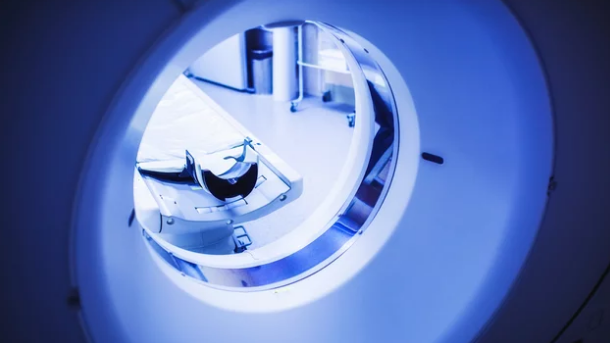Magnetic Resonance Imaging (MRI) has become a cornerstone of modern medicine, offering doctors detailed, non-invasive insights into the human body. At the heart of every MRI machine lies a powerful magnet, engineered with extraordinary precision. But beyond healthcare, these same principles of magnet technology are beginning to inspire one of the boldest scientific pursuits of our time: controlled nuclear fusion.
Nuclear fusion—the process that powers the stars—could provide humanity with nearly limitless clean energy. The challenge, however, is stability. Fusion reactors must confine plasma at temperatures exceeding 100 million degrees Celsius without it touching reactor walls. This requires magnetic fields of exceptional strength and stability, qualities MRI magnets already exemplify. Could MRI technology provide a model for achieving fusion reactor stability?
The Science of MRI Magnets
How MRI Works
An MRI scanner uses superconducting magnets to generate fields up to 7 Tesla, thousands of times stronger than Earth’s magnetic field. These fields align hydrogen protons in the body, which respond to radio waves and produce signals that form detailed images.
The critical elements of MRI magnets include:
- Superconductors cooled to cryogenic temperatures for zero electrical resistance.
- Extremely stable and uniform fields to avoid distortions in imaging.
- Long-term reliability, as MRI machines must operate safely in hospitals for years.
These design requirements parallel those of fusion reactors, where stability and precision determine success.
Fusion Reactors and the Challenge of Containment
Why Plasma Stability Is Hard to Achieve
Fusion plasma must be hotter than the core of the sun to overcome the repulsive forces between nuclei. No material can withstand direct contact with such heat, so scientists rely on magnetic confinement to suspend plasma within donut-shaped devices called tokamaks or twisted designs called stellarators.
But plasma is notoriously unstable. Small fluctuations in magnetic fields can cause it to wobble, drift, or collapse entirely, disrupting the fusion process. Achieving consistent, precise magnetic confinement is the single greatest challenge to making fusion commercially viable.
Lessons from MRI
Like plasma, protons in the human body respond sensitively to magnetic fields. MRI engineers developed ways to produce highly uniform, stable fields—lessons that could directly inform how plasma is confined in reactors.
MRI Magnets as a Model for Fusion
Stability and Uniformity
Just as blurry images result from uneven MRI fields, plasma instabilities can ruin a fusion experiment. MRI magnet technology has already mastered field uniformity on a smaller scale. Adapting this expertise may help fusion scientists fine-tune their confinement systems.
Superconducting Innovation
MRI has driven decades of progress in superconducting materials and cryogenic systems. Today, fusion research is pushing further with high-temperature superconductors (HTS), capable of producing magnetic fields stronger than 20 Tesla. These magnets, inspired by MRI’s foundation, could enable compact and more affordable fusion reactors.
Safety and Reliability
MRI machines are designed with built-in redundancies and fail-safe systems to ensure safety in hospitals. Similarly, fusion reactors must guarantee stability, not only for plasma confinement but also for protecting equipment and operators. MRI’s culture of safety engineering offers a model for reliability in high-stakes environments.
Real-World Applications of MRI-Inspired Fusion Technology
ITER: The Giant Leap
The ITER project in France is the world’s largest fusion experiment. Its superconducting magnets, weighing hundreds of tons, rely on principles refined through MRI technology. Cooling systems, magnet stability, and cryogenic design all reflect lessons first pioneered in medical imaging.
Compact Fusion Startups
Private companies like Commonwealth Fusion Systems (CFS) and Tokamak Energy are applying HTS magnets to design smaller, more efficient reactors. Their magnet systems are, in many ways, the next evolutionary step beyond MRI technology.
Cross-Disciplinary Expertise
Magnet engineers who once specialized in MRI machines are now contributing to fusion projects. This crossover highlights the shared foundation of these two seemingly different technologies.
Could MRI Really Guide Fusion Stability?
Opportunities
- Precision magnetic field design from MRI can inform plasma control.
- Superconductor advances developed for MRI lower costs and boost efficiency.
- Diagnostic techniques inspired by MRI imaging may help monitor plasma in real time.
Limitations
- Fusion magnets must withstand much stronger forces than MRI magnets.
- Plasma dynamics are far more complex than aligning hydrogen protons in tissue.
- Scaling from medical devices to massive reactors poses new engineering challenges.
While MRI magnets are not a direct blueprint for fusion systems, they provide a tested model of magnetic precision and reliability that can accelerate progress.
Conclusion: From Healing Bodies to Powering the Planet
MRI technology was developed to save lives through advanced imaging, but its influence may extend far beyond medicine. By demonstrating how to design stable, precise, and reliable magnetic systems, MRI magnets offer inspiration for solving the ultimate challenge of nuclear fusion: plasma stability.
If fusion succeeds, the same science that lets doctors peer inside the human body could also help humanity unlock a clean, virtually limitless energy source. In this way, MRI magnets may not just model reactor stability—they may help power the future of our civilization.
Also Read :
